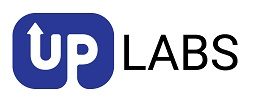Burnout has become one of the defining health challenges of modern life. Whether it arises from relentless workplace demands, the strain of caregiving, or the constant pull of digital connection, its effects on both body and mind are significant. Joe Kiani, Masimo and Willow Laboratoriesfounder, has long highlighted that prevention should guide the future of healthcare innovation. His latest project, Nutu™, reflects this principle by helping individuals turn small choices into sustainable habits. This perspective is especially relevant to burnout, where recovery depends not only on treatment but on prevention-focused strategies that make balance achievable.
The story of burnout is not only about exhaustion but also about the possibility of renewal. Across the globe, people are finding ways to restore balance by embracing small, consistent practices that rebuild energy and purpose. From adjusting sleep routines to incorporating daily movement and nutrition, these approaches highlight that recovery is a process of steady rebuilding. The growing focus on prevention shows that well-being is not regained in moments of crisis alone, but cultivated through everyday choices.
Understanding the Cost of Burnout
Burnout is now recognized as more than temporary fatigue, and the World Health Organization classifies it as an occupational phenomenon defined by emotional exhaustion, detachment, and reduced performance. The Centers for Disease Control and Prevention links it to disrupted sleep, chronic stress, and a higher risk of long-term health problems. Employers are increasingly aware of their economic impact, with Harvard Business Review reporting that stress-related absenteeism and lost productivity cost organizations billions of dollars each year.
This recognition has reframed burnout from an individual problem to a systemic challenge. When the cost is measured not only in health outcomes but in workforce stability and economic efficiency, prevention-first solutions become a business imperative as well as a personal one. The urgency is clear that without systemic change, the cycle of exhaustion will continue to affect both individuals and institutions. More companies are beginning to see employee well-being not as a reward but as a core element of risk management, workforce retention, and long-term productivity.
Small Habits, Lasting Results
Recovery from burnout often begins not with sweeping changes but with small, realistic adjustments. Research shows that incremental improvements, whether in sleep hygiene, hydration, or brief exercise routines, produce meaningful effects over time. A National Institutes of Health review emphasizes that modest lifestyle interventions can significantly improve mental resilience and reduce relapse into stress-driven exhaustion.
The effectiveness of these approaches lies in their sustainability. Unlike restrictive programs that demand immediate transformation, prevention-oriented methods align with existing routines and therefore stand a greater chance of lasting. This shift reflects a broader trend in health innovation, where the focus is moving away from crisis management and toward consistent, long-term resilience. Importantly, these practices are accessible because individuals do not need expensive programs to begin building healthier routines. Simple acts like taking short walking breaks, setting digital boundaries, or prioritizing hydration can compound into measurable improvements in energy and focus.
Tools That Support Renewal
An expanding array of tools and services is emerging to help individuals rebuild after burnout. Employers are experimenting with wellness initiatives that provide access to coaching, flexible schedules, and behavioral support. Digital platforms incorporate data from sleep trackers, nutrition logs, and activity monitors to deliver personalized feedback that encourages steady progress. These systems aim not to overwhelm users, but to empower them with gentle nudges toward healthier routines. Nutu follows this model by translating daily inputs on sleep, activity, and nutrition into small, practical adjustments. Instead of demanding sweeping changes, it provides guidance that aligns with existing habits, making balance more attainable over time.
Similar platforms are also finding footholds in corporate wellness programs, where employers see value in providing staff with accessible tools to manage stress and improve engagement. The rise of these technologies illustrates how prevention is becoming embedded not only in personal life but in organizational strategy.
Insights from Preventive Leaders
A central theme in recovery from burnout is the importance of natural and achievable habits. Experts stress that sustainable change depends less on radical overhauls and more on building routines people can maintain over time. This focus on everyday behaviors rather than short-term fixes is what makes prevention-first approaches especially effective.
Joe Kiani, Masimo founder, says, “I’ve seen so many people start on medication, start on fad diets… and people generally don’t stick with those because it’s not their habits.” His perspective echoes research in behavioral science, which shows that strategies rooted in existing routines are far more likely to endure. For those rebuilding after burnout, this lesson is crucial that renewal depends not on becoming someone new, but on rediscovering balance within the life they already lead. The emphasis on empathy, consistency, and accessibility makes prevention-first tools uniquely suited to supporting those recovering from exhaustion.
Policy and Systemic Change
Individual action is critical, but supportive infrastructure is what makes long-term recovery feasible. Both the OECD and the World Health Organization have argued that workplace wellness programs and mental health policies must be prioritized to address burnout at scale. These organizations highlight that preventive care not only reduces health costs but also strengthens economic productivity.
Several countries are already experimenting with structural interventions. In Japan, government-backed wellness subsidies support employees in managing stress, while in the United States, large employers are beginning to link wellness programs with insurance incentives. These examples show how systemic investment in prevention can amplify the benefits of personal action, creating healthier environments for individuals and communities alike. Such efforts suggest that the future of health policy will increasingly blend public infrastructure with private innovation to make prevention accessible to all.
Finding Purpose Beyond Exhaustion
The journey after burnout is not about returning to a previous state of performance but about building a healthier, more purposeful life. Individuals who embrace prevention-first practices often find renewed clarity and energy, transforming recovery into an opportunity for long-term resilience. Their stories underscore that sustainable change is not only possible but within reach when supported by practical tools and empathetic design.
As prevention becomes central to health innovation, the lessons of burnout recovery illustrate how technology, policy, and personal effort converge. Joe Kiani, Masimo founder, has argued that prevention is most effective when it becomes part of daily routines, a principle reflected in both workplace initiatives and personal renewal. By combining small, sustainable habits with systemic support, people can move beyond exhaustion and rediscover both health and purpose. The promise of prevention is not only to help individuals heal but to create a future where well-being is woven into the fabric of everyday life. The focus on empathy, sustainability, and prompt action signals that recovery is not a return to what was lost, but a path toward something stronger and more enduring.



